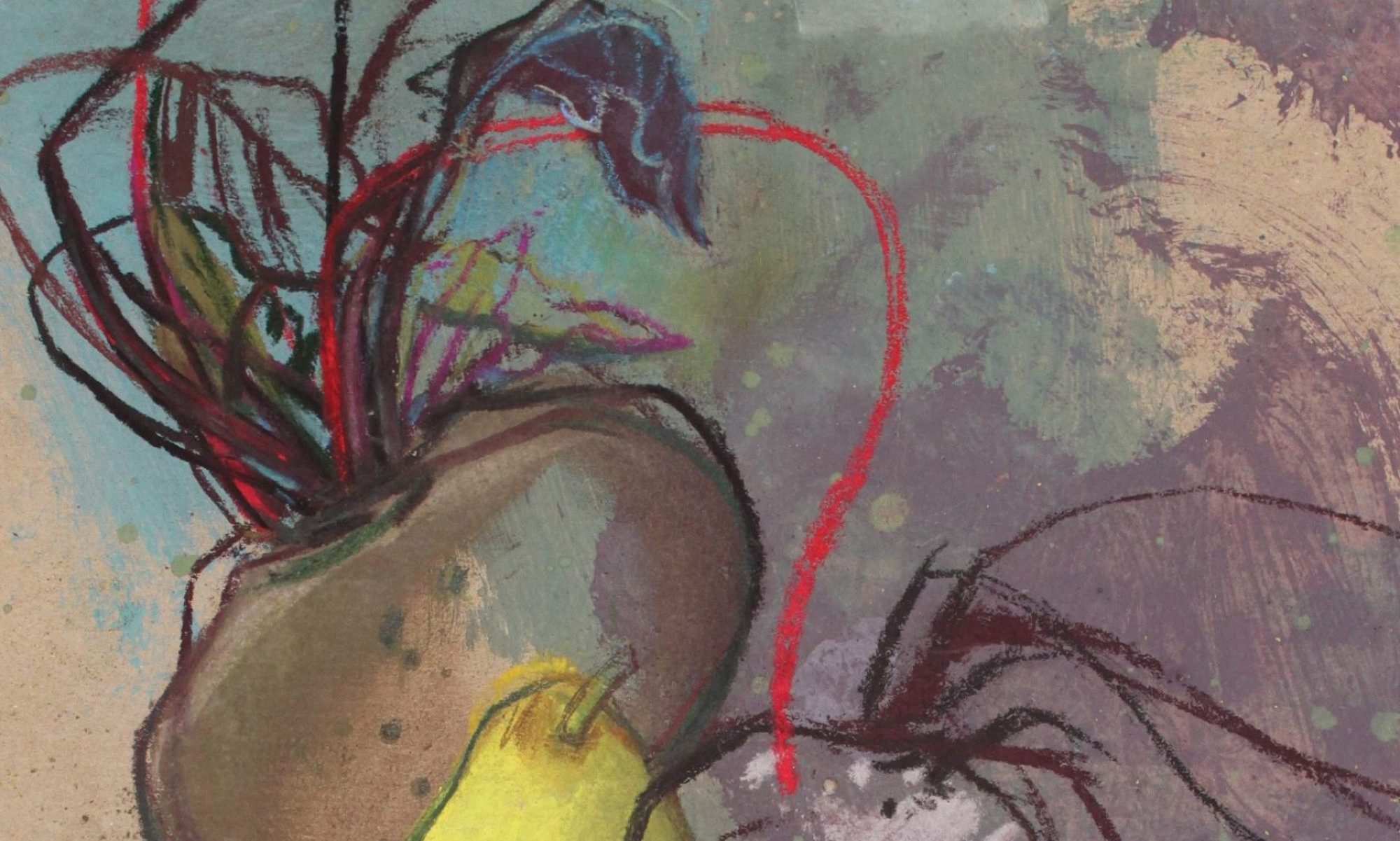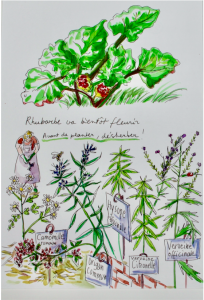Are you looking for the best time/result ratio? Vote for rhubarb! For non-gardeners and occasional gardeners alike, rhubarb is a godsend. Requiring no care and growing in mid-shade and cool soil, this hardy perennial thrives every year. These giant leaves can reach a span of up to two meters. They are supported by their scarlet-red stems or petioles, tending to green, and form a particularly beautiful decorative ensemble in June.
Brought back from Asia by Marco Polo, where it was used in Chinese medicine, it was not consumed in Europe until the 18th century.
There’s no need to peel the stems, especially in spring, as their tangy flavor goes wonderfully well with strawberries or bananas, whose acidity it softens. On the other hand, their toxic leaves, rich in oxalic acid, are a perfect aphid repellent for mulching fruit trees. In the King’s kitchen garden at Versailles, the feet of old pear trees are sometimes covered with them.
As for its panicle of white flowers, opinions are divided: some cut it off immediately for fear it will weaken the plant, others don’t care.
Returning from a trip to the south of England, I was surprised to see tall earthenware jars standing in the middle of rhubarb patches – what purpose could they possibly serve? British gardeners assured me that the stalks growing underneath, sheltered from the sun, would be able to grow in the jars.

